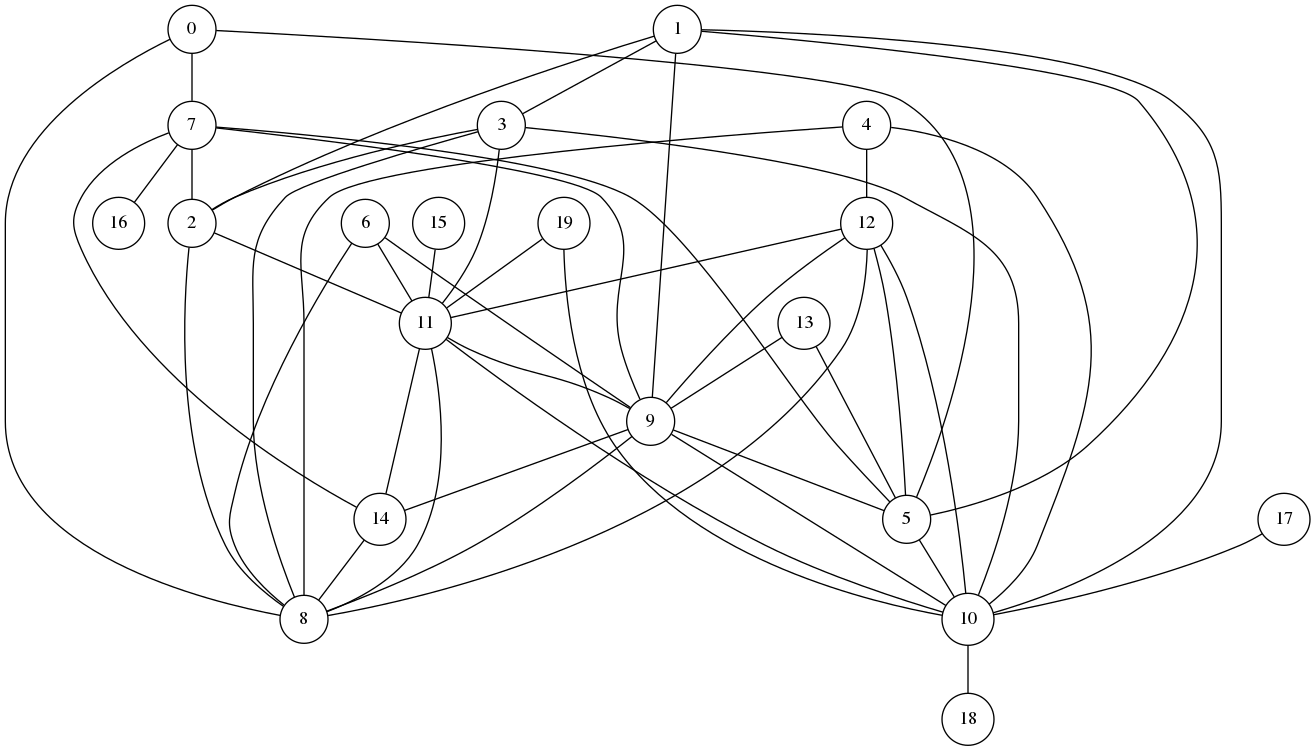Bron-Kerbosch Algorithm in Clojure
Description of the problem
Assume we have a simple undirected graph \(G=(V,E)\). Then a subset \(C\) of the set of vertices \(V\) is called a clique if for every pair of distinct elements \(a,b\in C\) the pair \(\{a,b\}\) is an edge in \(G\). The set of all cliques of a graph is partially ordered under set inclusion. A clique is called maximal if it is a maximal element in this poset. Today, I am going to implement a version of the Bron-Kerbosch Algorithm which finds the set of all maximal cliques in a graph. I wrote about it earlier but that version was in common lisp, and today I am going to write an implementation from scratch in clojure.
An implementation in clojure
Let us start with a clean namespace with the necessary libraries loaded:
(ns bron-kerbosch
(:use clojure.set))I am going to represent a graph as a set of edges where each edge is a pair of distinct elements chosen from the underlying set of vertices. I am going to need two utility functions for later. The first returns the set of vertices for a given graph, while the second returns the set of neighbors of a given vertex in a given graph.
(defn vertices [graph] (reduce union graph))
(defn neighbors [v graph]
(difference (reduce union (filter #(contains? % v) graph))
#{v}))
#'bron-kerbosch/vertices
#'bron-kerbosch/neighborsFinally, the main function, which is implemented as a recursive function:
(defn bron-kerbosch
([graph] (bron-kerbosch graph (vertices graph) #{} #{} #{}))
([graph p x r res]
(if (and (empty? x) (empty? p))
(union #{r} res)
(loop [ps p
xs x
cs res]
(if (empty? ps)
cs
(let [v (first ps)
nv (neighbors v graph)]
(recur (into #{} (rest ps))
(union #{v} xs)
(bron-kerbosch graph
(intersection ps nv)
(intersection xs nv)
(union #{v} r)
cs))))))))
#'bron-kerbosch/bron-kerboschIn order to test the code, I am going to need a function that generates a random simple graph:
(defn get-random-graph [n m k]
(->> (range n)
(mapcat (fn [i] (repeatedly m (fn [] #{i (+ 1 i (rand-int k))}))))
distinct
(into #{})))
#'bron-kerbosch/get-random-graphOK. Here is a random graph:
(def random-graph (get-random-graph 12 5 9))
random-graph
#'bron-kerbosch/random-graph
#{#{13 5} #{19 11} #{3 11} #{6 3} #{0 1} #{14 10} #{15 11} #{13 9} #{7 16} #{7 6} #{2 10} #{3 5} #{5 10} #{12 10} #{0 4} #{3 10} #{3 12} #{11 16} #{17 11} #{0 7} #{4 8} #{0 3} #{5 14} #{7 13} #{10 8} #{6 11} #{6 8} #{17 10} #{12 5} #{4 10} #{7 2} #{13 11} #{15 8} #{1 6} #{9 10} #{4 2} #{7 9} #{1 3} #{15 9} #{1 10} #{4 9} #{1 9} #{13 10} #{14 8} #{17 8} #{0 5} #{10 18}}

And now, let us test our main function on this random graph:
(bron-kerbosch random-graph)
#{#{3 12 5 10} #{19 11} #{15 11} #{7 16} #{7 6} #{0 4} #{11 16} #{17 11} #{0 7} #{14 10 8} #{5 14 10} #{7 13 9} #{1 6 3} #{1 9 10} #{6 8} #{7 2} #{13 9 10} #{1 3 10} #{13 11} #{15 8} #{0 1 3} #{0 3 5} #{6 3 11} #{15 9} #{17 10 8} #{4 9 10} #{4 10 8} #{4 2 10} #{13 5 10} #{10 18}}